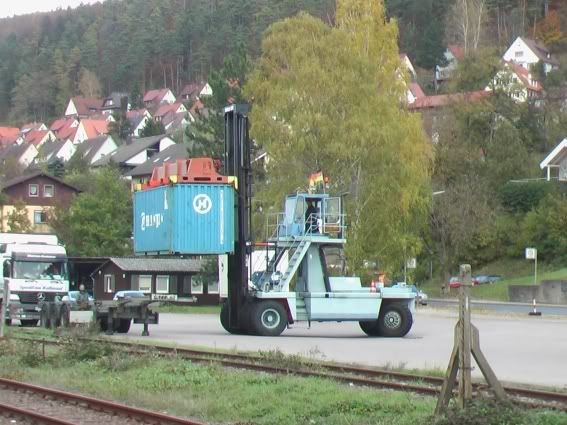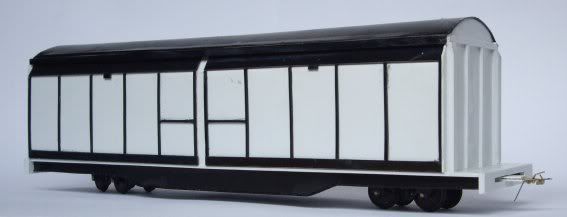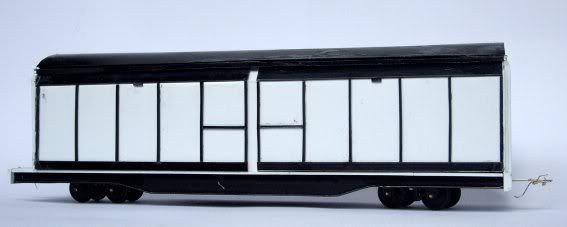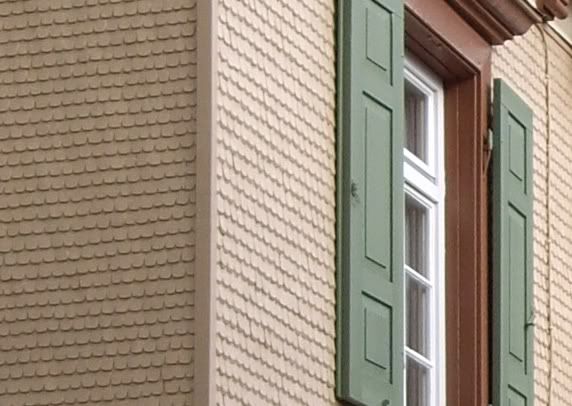 Let’s face it: you can have too many pictures of a white plasticard van, so I figure it’s time to introduce my ideas for “Spitzenwald”, the layout which will hopefully soon grace the Ikea shelves in our living room. The original plan was for an inglenook-style model, but that was replaced when I tried it out- running 64mm wide stock makes for big overhangs and effectively shortened the sidings. The current plan is partly plagiarised from Bob Hughes’ N-gauge “Altgarten” model –in particular his idea of putting the station and goods shed on the siding at rear. Bob also helped me to tweak a couple of details, which I’m grateful for. You can see the original "Altgarten" here.
Let’s face it: you can have too many pictures of a white plasticard van, so I figure it’s time to introduce my ideas for “Spitzenwald”, the layout which will hopefully soon grace the Ikea shelves in our living room. The original plan was for an inglenook-style model, but that was replaced when I tried it out- running 64mm wide stock makes for big overhangs and effectively shortened the sidings. The current plan is partly plagiarised from Bob Hughes’ N-gauge “Altgarten” model –in particular his idea of putting the station and goods shed on the siding at rear. Bob also helped me to tweak a couple of details, which I’m grateful for. You can see the original "Altgarten" here.During operation, I’d assume the two lines exiting the scene at left would be a loop, from which there would be access to an intermodal terminal. This wouldn’t be a big operation: probably just one siding with a concrete pad and a container crane, maybe a warehouse for more specialised deliveries or palletts:
Container stacker at Nagold railway station, a few kilometres away from the Fictitious KÖB.
The "terminal" at Spitzenwald would be similar.
The "terminal" at Spitzenwald would be similar.
Of course in reality it will end in a couple of sidings or a traverser, depending on how brave I’m feeling at the time.
At the moment I’m leaning towards a wood yard as a scenic barrier in front of the fiddle yard, as wood is most likely to be the staple traffic of the line, (more on that at a later date). The road bridge may be reborn as an old city wall: this would be narrower and possibly more convenient as a scenic break, and could turn with the backscene a bit as well. It’s not unknown for railways to enter older towns this way in Germany.
The KÖB will also have a maintenance shed for railcars: This is common on the smaller independent railways here because the early commuter and school services need to start at this end of the branch. At the moment it’s one road but I may have a low relief door at the end of the middle road as well.
Small railcar fuel and maintenance point in Endingen, near Freiburg, used by road and rail vehicles. I like the pump to the right of the door...
Behind this is the general freight shed, probably used by the local farmers cooperative. It would also be a place to unload post wagons. I expect the station will have been rented or sold, so people will have to get their tickets from a machine on the platform.
That’s the plan anyway. I now hesitantly offer it up for criticism, ideas, thoughts, and suggestions before I start gluing things to other things…






